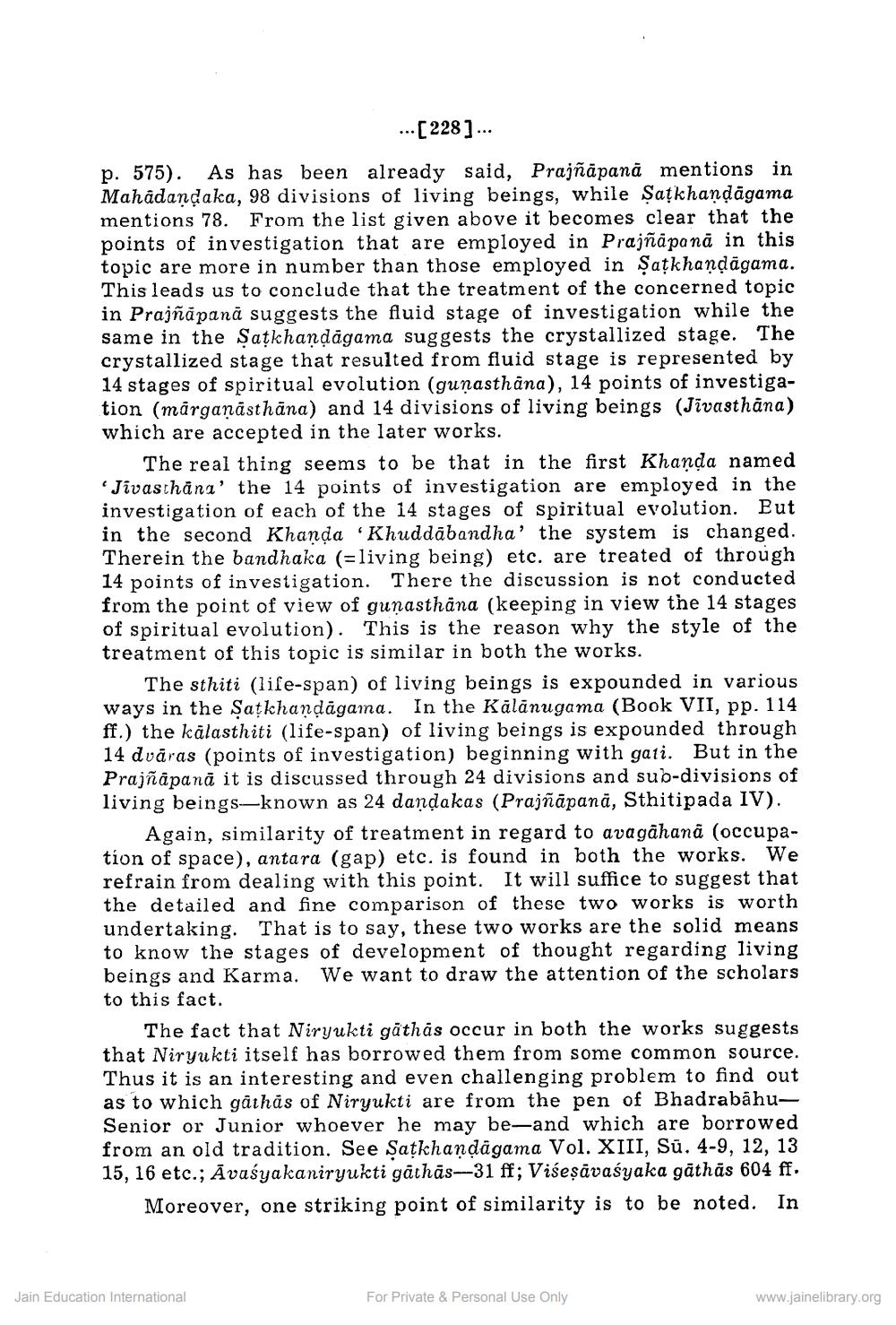________________
... [228]...
p. 575). As has been already said, Prajñāpanā mentions in Mahädandaka, 98 divisions of living beings, while Şațkhandagama mentions 78. From the list given above it becomes clear that the points of investigation that are employed in Prajñāpana in this topic are more in number than those employed in Satkhandāgama. This leads us to conclude that the treatment of the concerned topic in Prajñāpanā suggests the fluid stage of investigation while the same in the Satkhandagama suggests the crystallized stage. The crystallized stage that resulted from fluid stage is represented by 14 stages of spiritual evolution (gunasthana), 14 points of investigation (märganästhāna) and 14 divisions of living beings (Jivasthāna) which are accepted in the later works.
The real thing seems to be that in the first Khanda named 'Jivasthana' the 14 points of investigation are employed in the investigation of each of the 14 stages of spiritual evolution. But in the second Khanda Khuddābandha’ the system is changed. Therein the bandhaka (=living being) etc. are treated of through 14 points of investigation. There the discussion is not conducted from the point of view of gunasthāna (keeping in view the 14 stages of spiritual evolution). This is the reason why the style of the treatment of this topic is similar in both the works.
The sthiti (life-span) of living beings is expounded in various ways in the Satkhandagama. In the Kälānugama (Book VII, pp. 114 ff.) the kalasthiti (life-span) of living beings is expounded through 14 dvāras (points of investigation) beginning with gati. But in the Prajñāpanā it is discussed through 24 divisions and sub-divisions of living beings-known as 24 dandakas (Prajñāpanā, Sthitipada IV).
Again, similarity of treatment in regard to avagâhana (occupation of space), antara (gap) etc. is found in both the works. We refrain from dealing with this point. It will suffice to suggest that the detailed and fine comparison of these two works is worth undertaking. That is to say, these two works are the solid means to know the stages of development of thought regarding living beings and Karma. We want to draw the attention of the scholars to this fact.
The fact that Niryukti gäthas occur in both the works suggests that Niryukti itself has borrowed them from some common source. Thus it is an interesting and even challenging problem to find out as to which gathās of Niryukti are from the pen of BhadrabahuSenior or Junior whoever he may be—and which are borrowed from an old tradition. See Satkhandagama Vol. XIII, Sü. 4-9, 12, 13 15, 16 etc.; Avaśyakaniryukti gathäs---31 ff; Visesavasyaka gāthas 604 ff.
Moreover, one striking point of similarity is to be noted. In
Jain Education International
For Private & Personal Use Only
www.jainelibrary.org




